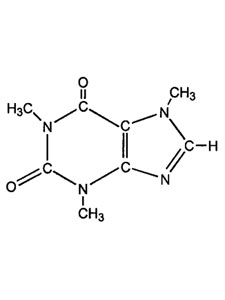Between the Leaves January 2008
I have only one word to describe my New Year: detox! In keeping with my resolution, I'd like to switch to decaffeinated tea for a while. I'm just worried that the chemicals used to do that are worse than the caffeine. Are they?
Well, that depends on when and where you are. Back when decaffeination was first invented (in 1903 by the Germans Ludwig Roselius and Karl Wimmer, if you're keeping track), coffee beans were first steamed with a salt solution, and then flushed with benzene to effectively "wash" away the caffeine. It worked wonderfully, but benzene turned out to be quite the little carcinogen. Of course, it is no longer used to decaffeinate coffee - and as it was never even used to decaffeinate tea, worrying about it is especially irrelevant. In fact, there are only two decaffeination methods used for tea imported to the US today, though a third also exists and is very popular in other parts of the globe.

That third method utilizes a compound called methylene chloride as the decaffeinating solvent. If you're the type that reads labels, you might recall that it is a substance found in things like dry cleaning solutions and paint strippers. It can be nasty to work with in a lab, as short-term effects to high exposure include maladies such as headaches, dizziness, faintness, and skin irritation. Naturally, it's not the sort of thing you'd ever want to take a bath in, and the US has decided your tea shouldn't eitherâespecially as traces of the solvent remain on the leaf after processing. Yet, while the US health concerns are valid, many studies show that methylene chloride is fairly danger-free, especially in these trace amounts. If you travel abroad, let things like Montezuma's Revenge be your primary concern.
In terms of chemical safety, the two remaining methods - ethyl acetate and carbon dioxide - are both fine, though in terms of quality carbon dioxide is vastly preferable. Unfortunately, ethyl acetate is not the most effective of decaffeinating agents and its extended flushing will remove a significant percentage of the healthy compounds in tea, damage the cellular integrity of the leaf, and deliver a product with a weaker taste and body than regular teas. Ethyl acetate's merits primarily lie in its greater economic feasibility and in the fact that it is a compound that can be found in some concentration throughout most plant life. This allows companies - particularly those dealing in "supermarket teas" - to affix the "natural" label to teas decaffeinated using this solvent, despite the fact that nearly all of it is synthetically created.
Higher end companies, on the other hand, often employ the carbon dioxide method, which ingeniously uses elementary principles of transition states to make a better-tasting, healthier, decaffeinated tea. Basically, moistened leaves are placed into a sealed chamber and flushed with carbon dioxide. Pressure within the chamber is then increased until the carbon dioxide transitions from gas to liquid and the liquidized carbon dioxide soaks into the leaves and binds with caffeine. After a time, the carbon dioxide is decanted, the leaves are dried, and - in some systems - the gas is reclaimed. When it's all done, all that is left is a decaffeinated tea with remarkably whole leaves that retain somewhere around 95% of the beneficial polyphenols. Best of all, there is no chemical residue whatsoever. For an especially thorough New Year's detox regime, a carbon dioxide decaffeinated tea would make an excellent alternative to most regular teas.
